Quick Airline Information:
✈Airline IATA* code: AS
✈Airline ICAO* code: ASA ✈Founded: 1932 (First KNown as McGee Airways)
✈Website: www.alaskaair.com✈Alliance: None✈History
✈Operations and Destinations 🌍
✈Fleet ✈️
✈Photo Slide 📷✈Airline reviews ⭐
*IATA: (International Air Transport Association)
*ICAO: (International Civil Aviation Organization)
History Menu:
The airline traces its roots to McGee Airways, which was started in 1932. The airline flew its inaugural service between Anchorage and Bristol Bay with a Stinson single engined, three-passenger aircraft.
It was the middle of the Great Depression and the airline was struggling financially. There were too many airlines in Anchorage at the time, and not enough demand to support them. In the next few years the airline performed many mergers and acquisitions that produced changes in the name and saw business expand throughout Alaska. The first of these mergers was in 1934, when McGee sold his namesake airline for US$50,000 to Star Air Service, an airline also located in Anchorage.
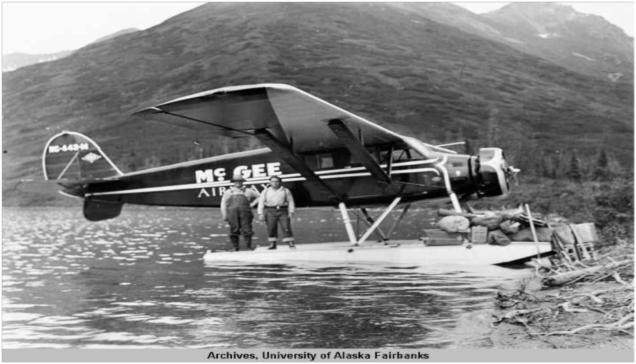
With a fleet of fifteen aircraft, Star Air Service was a dominant airline in Alaska. But Star continued to struggle financially because of high maintenance costs for its wooden planes. In 1937, McGee came back to the airline and opened a liquor store, and the airline began flying liquor to remote Alaskan communities. That year, Star Air Service purchased Alaska Interior Airlines and was incorporated as Star Air Lines.
In 1941, Star Air Service was purchased by Raymond Marshall, a businessman from New York. In 1942, the airline purchased three other airlines in Alaska, Lavery Air Service, Mirow Air Service and Pollack Flying Service, as well as, a hangar at the Anchorage airport. That year, the airline's name was changed to Alaska Star Airlines.
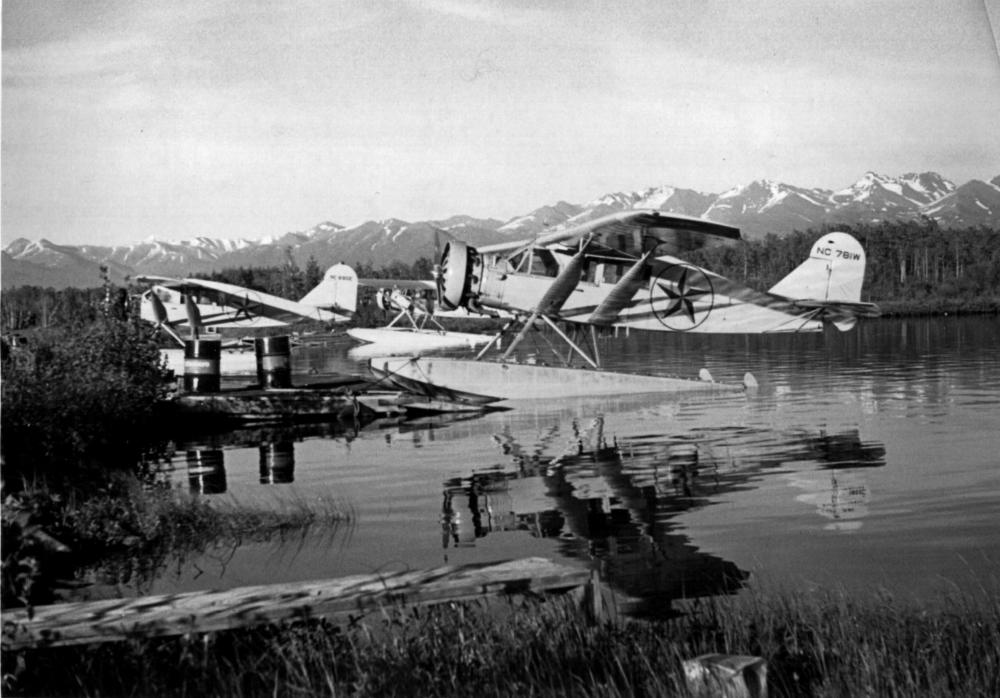
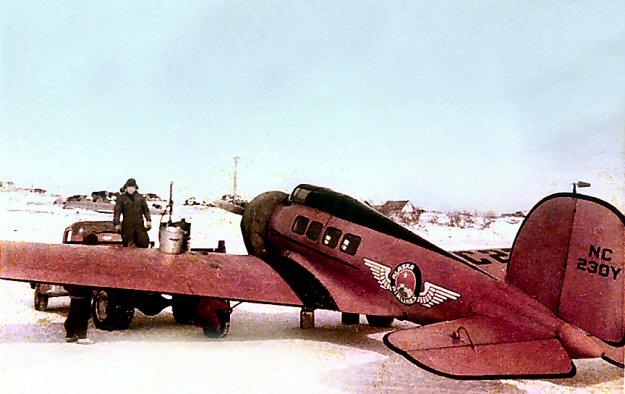
When the United States entered World War II in December 1941, Alaska Airlines faced a shortage of pilots. During the war, the airline lacked funds and equipment, and pilots were often forced to buy fuel for their planes out of their own pockets. The company, which was frequently subjected to lawsuits, also went through many different presidents during this time. In 1943, Alaska Airlines purchased the Lockheed Model 18 Lodestar, its first multi-engine aircraft. The name Alaska Airlines was adopted on May 2, 1944, having narrowly beaten a competitor who was also applying for the name.
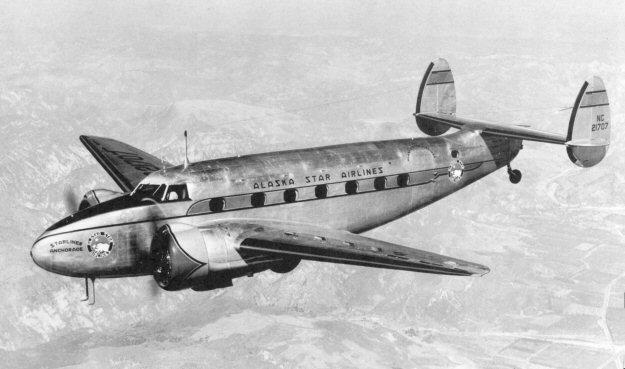
After World War II, the airline purchased Douglas DC3s, Douglas DC-4s and Curtiss-Wright C-46 Commandos. In 1947, jockey James Wooten became president of the airline and he began to expand the airline greatly. Alaska Airlines was the first carrier certified to operate DC-3s on skis. In 1949 Alaska Airlines' large charter business made it profitable, and the airline moved its base of operations to Paine Field, an airport north of Seattle. It kept a branch office in Anchorage, however.
Also in 1949, Alaska Air began operating five Bell 47B helicopters in order to support oil exploration on the North Slope thus becoming the first airline in Alaska to operate rotary-wing aircraft. Alaska Airlines started the 1950s without its worldwide charter business and operations restricted to the state of Alaska.
In 1950, it purchased two smaller Alaskan airlines, Collins Air Service and Al Jones Airways. In 1951, the CAB awarded Alaska Airlines with a temporary certificate allowing them to operate on routes from the Alaskan cities of Anchorage and Fairbanks to Seattle and Portland in the contiguous United States; this award would become permanent in 1957.
In 1952, the CAB appointed Nelson David as president, and he began to improve the financial stability of the airline. The company began service of the Douglas DC-6, the airline's first pressurized plane, enabling flights above clouds and weather disturbances. On these DC-6's, the airline introduced "Golden Nugget" service, which included an on-board saloon and piano.
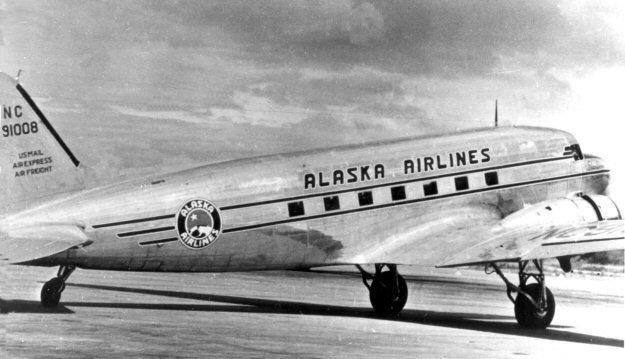
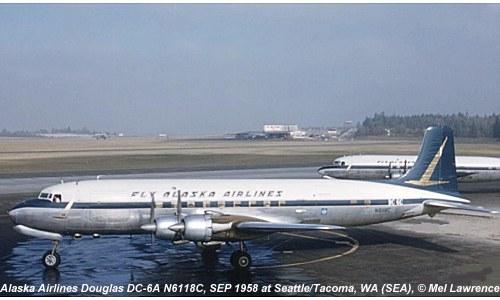
In 1961, competitors began introducing jets on routes Alaska Airlines flew. To counter this competition, the airline negotiated with aircraft manufacturer Convair to purchase a Convair 880 jetliner. The company introduced the new jet aircraft the same year. In 1966 the company received its first Boeing 727-100 jets and removed the Convair 880. Several of Alaska's first 727s were series 100C models which could be operated either as all cargo freighters, in an all passenger configuration or as mixed passenger/freight combi aircraft.
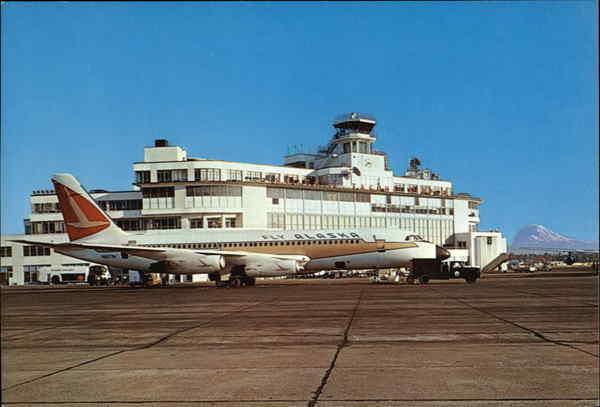
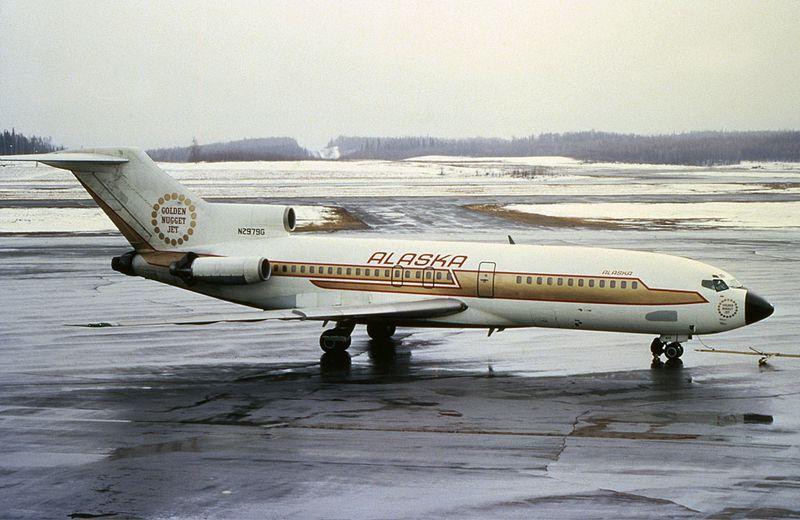
In the spring of 1967, greatly increased passenger loads required quick addition of fleet aircraft and Alaska purchased a Convair 990 jetliner. This aircraft remained in service along with an increased fleet of Boeing 727-100's which were then joined by stretched Boeing 727-200s which in turn became Alaska Airlines' signature aircraft for the next 25 years. It also became the first carrier to fly the Lockheed L-100 Hercules (L382 model), the civil version of the military C130 cargo turboprop.
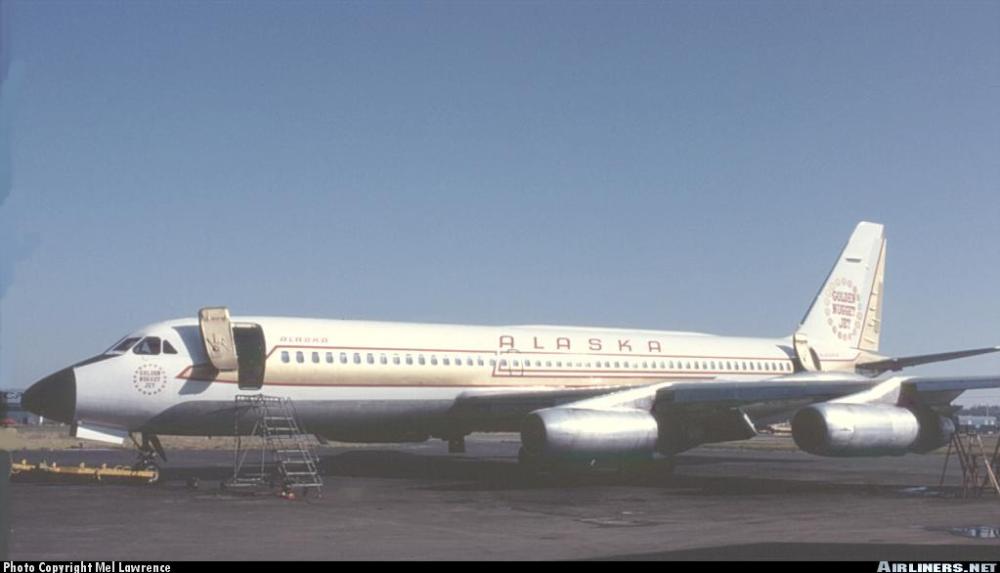
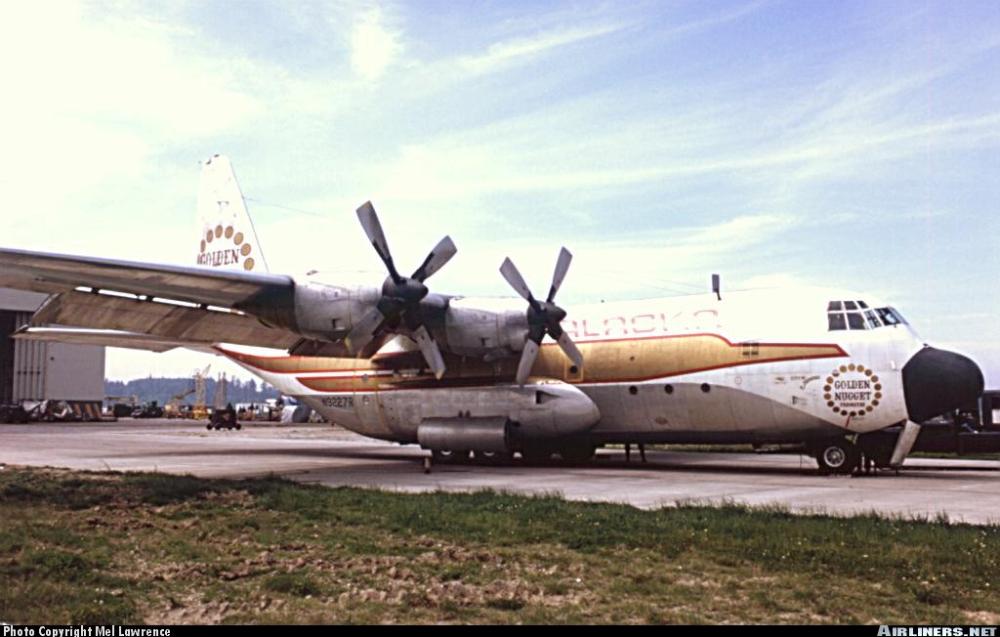
Alaska also owned Lockheed Constellation propliners including two Lockheed L1649A Starliners from 1962 to 1968, and three L-1049's which were used for Military Air Transport Service operations. Smaller prop and turboprop aircraft were also operated, including the Convair 240, de Havilland Canada DHC-6 Twin Otter and Super Catalina amphibian aircraft as well as two versions of the Grumman Goose amphibian aircraft, these aircraft joined the fleet when the airline acquired local southeast Alaska operator Alaska Coastal Airlines in 1968.
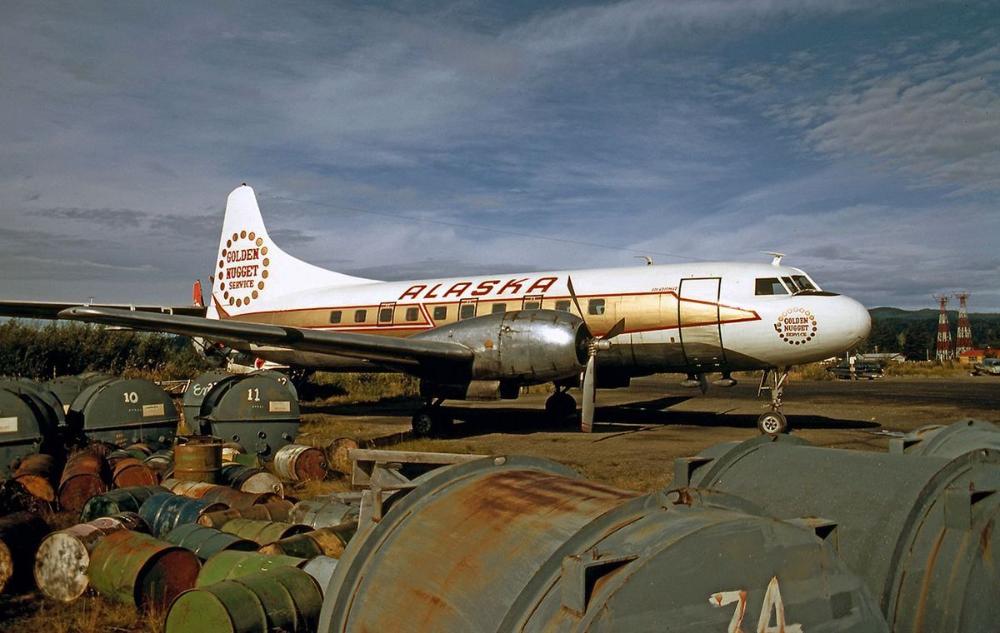
During this time, Alaska Air faced some tough competition with other airlines such as Northwest Airlines, Pan Am and Pacific Northern Airlines. Northwest and Pan Am at different times operated Boeing 747 wide body jetliners on their services to Alaska with Northwest flying Seattle–Anchorage nonstop with the jumbo jet and Pan Am flying Seattle–Fairbanks nonstop with the 747. To set itself apart from the competition, Alaska Air turned to some cheap but imaginative gimmicks such as having safety instructions read as rhymes, staging fashion shows in the aisles and having bingo games on board while en route.
In 1965, Alaska Airlines turned over some routes between small Alaskan communities, as well as some smaller aircraft, to Wien Air Alaska. This allowed Alaska to focus on more heavily travelled routes and allowed them to sell off smaller aircraft.
Throughout the 1960s, Alaska Airlines worked to promote tourism to Alaska by offering charter flights to the continental United States. In an attempt to increase the state's appeal, Alaska Airlines conducted a promotional tour of Japan in 1963. In 1968 two smaller airlines, Alaska Coastal Airlines and Cordova Airlines, were purchased and taken over by Alaska. In the beginning of the 1970s, Alaska Airlines began charter service to Siberia in the Soviet Union. This was the result of three years of secret negotiations between Alaska Airlines and Soviet authorities.The airline gained permission to fly more than two-dozen flights in 1970-72. Alaska Airlines was also operating Boeing 707, Boeing 720 and Boeing 720B jetliners during the early and mid 1970s.
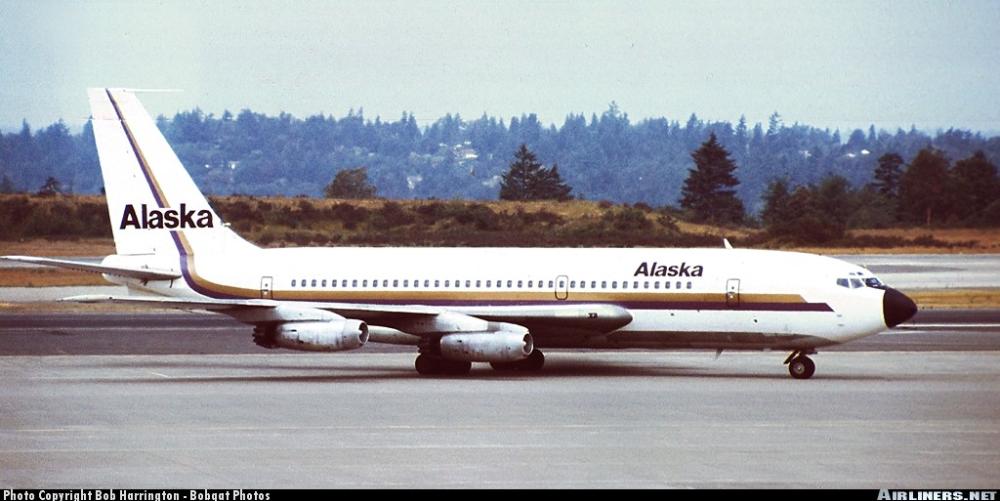
However, the airline was not in good financial shape at that time. Like much of the airline industry, Alaska Airlines was hit with rising fuel and operating costs and was on the verge of bankruptcy. The airline's cargo business was dropped completely, as well as many flights and employees. Cosgrave, the new CEO, also sought to improve the airline's tarnished image of "Elastic Airlines." As a result of these efforts, the airline made a profit in 1973 and continued to be profitable thereafter.
The logo was changed to an image of a smiling Eskimo, which remains today. The image of the Eskimo first appeared in 1972 alongside three other logos that each represented a part of Alaskan history: a totem pole, a gold miner, and Russian spires. In 1976, the airline adopted the Eskimo tail fleet-wide, with the design slightly changed to have the face smiling.
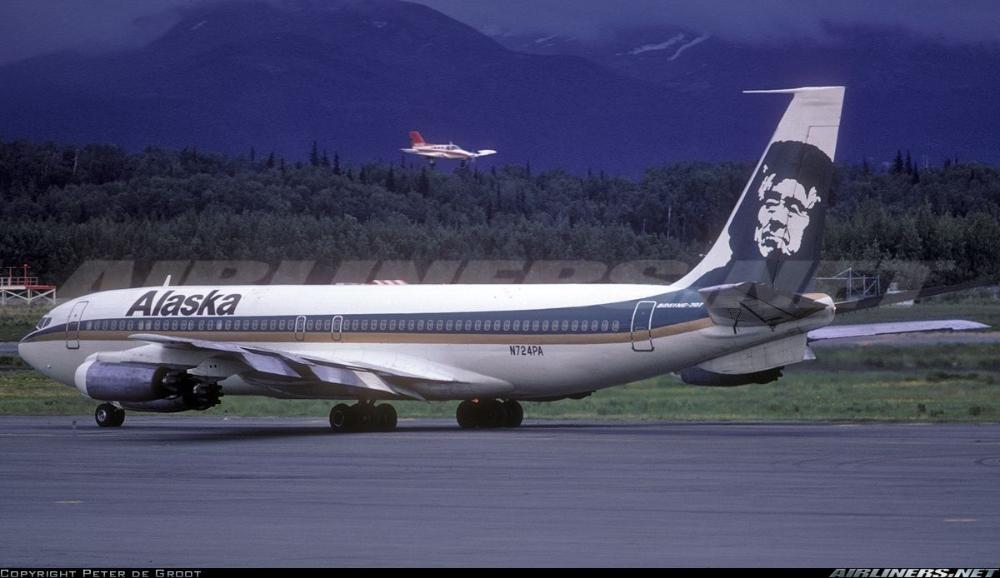
After deregulation, the company's real-estate division was spun off into its own company, with Cosgrave becoming its chairman. Leadership of the airline was passed to Bruce Kennedy, a close associate of Cosgrave. Cosgrave made an alliance with Alaska Airlines to purchase competitor Wien Air Alaska, but this ultimately failed and resulted in fines. Immediately after deregulation, the airline began to expand, adding the cities of Portland and San Francisco to its network. Soon later, the airline resumed services to the Alaskan cities of Nome and Kotzebue, and it also introduced service to Palm Springs, California.
Burbank and Ontario were added in 1981. Other cities in the continental US that were added to the airline's route map by 1985 were Oakland, San Jose, Spokane, Boise, Phoenix and Tucson. Deregulation also brought challenges to the airline, however. The airline was faced with increased competition and inflation that put tremendous pressure on costs, profits and salaries. By 1979, competitors Northwest Airlines and Western Airlines were both flying wide body McDonnell Douglas DC-10 jets on the core Anchorage– Seattle nonstop route with additional competition being provided by Wien Air Alaska which had begun flying nonstop jet services between Anchorage and Seattle. In the 1980s, Alaska Airlines began acquiring McDonnell Douglas MD-80s to replace their aging 727s. Alaska was the launch customer for the MD-83, taking delivery of their first MD-80s in 1985.
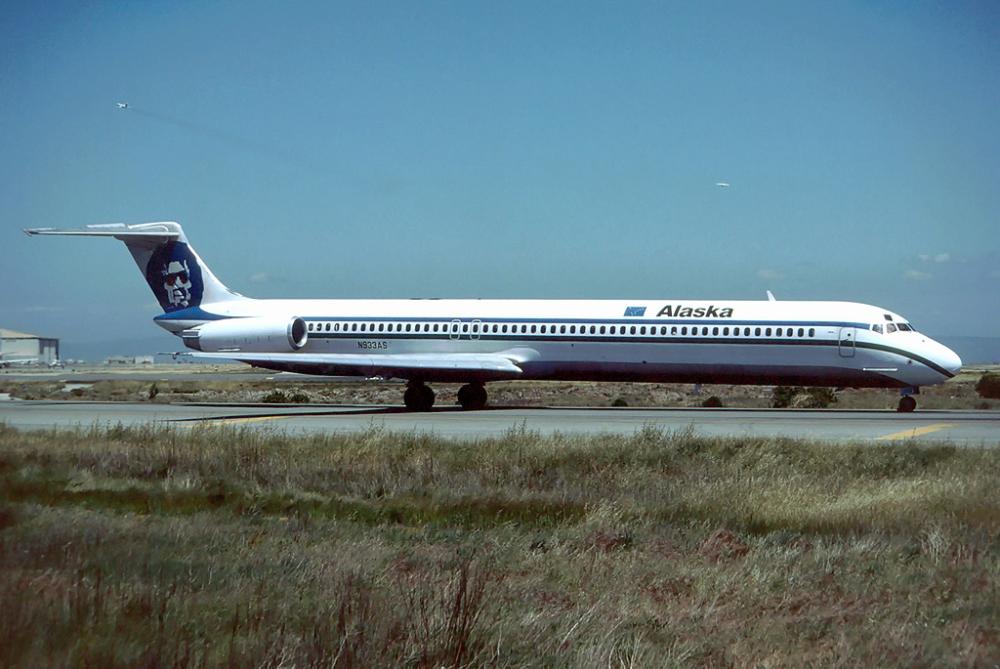
Also in 1985, the Alaska Air Group was formed as a holding company for Alaska Airlines. In 1986 Alaska Air Group acquired regional airline Horizon Air, which remained a separate brand from Alaska Airlines; since then, both airlines have been subsidiaries of Alaska Air Group. In 1987, Alaska Airlines purchased Jet America Airlines. Additional MD-80s entered the fleet via the acquisition of Jet America Airlines in 1987.
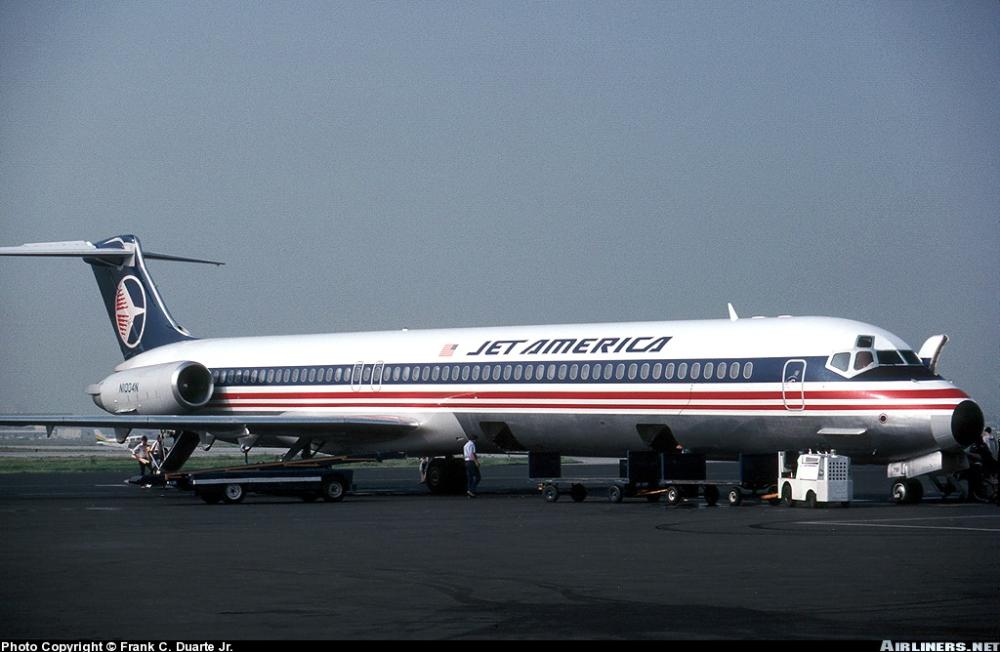
There was also a big seasonal imbalance in travel to Alaska, which mainly took place in the summer. In an effort to compensate for this, the airline introduced service to Mexican resorts. In 1988, the airline began servicing the Mexican resort cities of Mazatlán and Puerto Vallarta. The airline began the 1990s with plans to lease 24 Boeing 737-400s. The first aircraft was delivered in April 1992.
As the airline marked its 19th consecutive year of profits in a turbulent industry and racked up many awards for customer service, Bruce Kennedy retired in May 1991 and was succeeded by Raymond J. Vecci. Alaska Airlines try to buy MarkAir. A new low cost airline which began operating in 1984, however the bid was unsuccessful and the competition between the two carriers intensified. Alaska had more competition in 1993 when low-cost airline Southwest Airlines entered the Pacific Northwest of the United States by purchasing Morris Air. Nevertheless, Alaska Airlines was able to keep its costs down, but it maintained its high level of customer service. Alaska continued to take delivery of new MD-83s during the 1990s, both to meet the demands of a growing route system, and to replace its aging and fuel inefficient 727 fleet. Their last 727 was retired in March 1994.
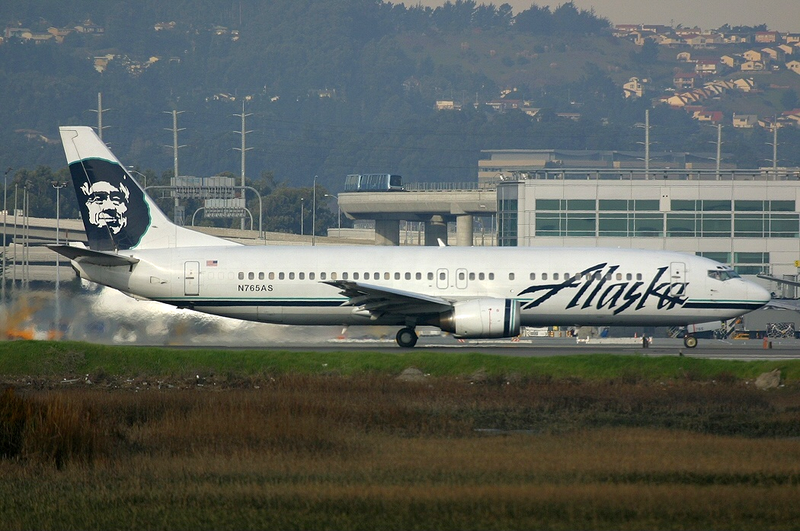
Also, the airline began buying new 737s, ordering three Boeing 737-700s and becoming the launch customer for the Boeing 737-900 when it placed an order for ten of the jets in November 1997. With the delivery of Boeing 737 Next Generation aircraft starting in 1999, Alaska began launching more medium-haul flights. In 2000, Alaska started service between Anchorage and Chicago. On May 15, 2001, the airline took delivery of its first 737- 900.
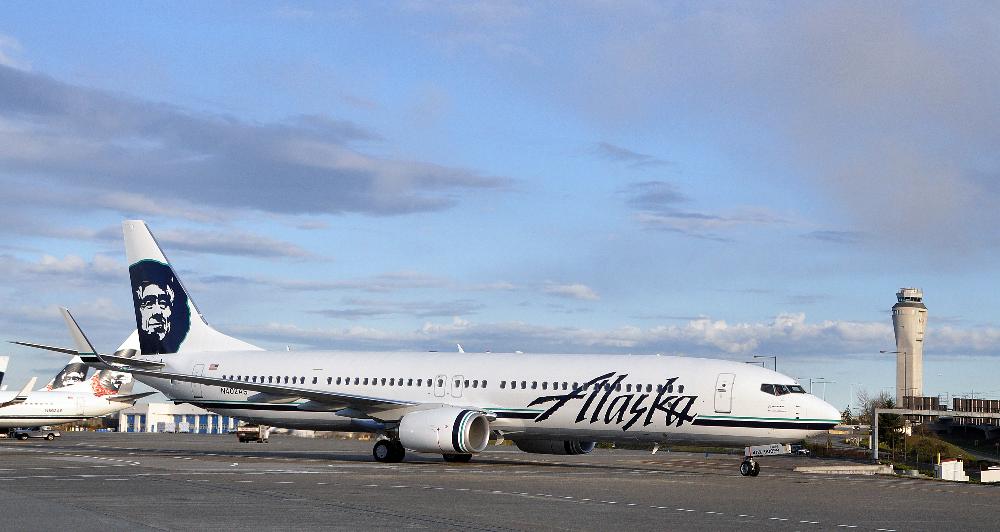
In January 2002, William Ayer was named CEO of Alaska Airlines. He led the company through a transformation called Alaska 2010 that was intended to insulate the airline from the traditional boom-bust cycle of the airline industry. In 2002, flights to Newark, New Jersey, were launched and in 2003, services to Orlando and to Boston began. In 2005, due to the greater efficiency of the Boeing 737 Next Generation and rising costs for maintenance, fuel, and crew training, Alaska Airlines decided to phase out its remaining 26 MD-80s and trained its pilots to fly the newer Boeing 737-800s that were being ordered to replace them.
In 2005, Alaska Airlines contracted out many of its jobs, including ground crew positions, to Menzies Aviation. Starting in June 2006, Alaska Airlines introduced new cargo aircraft to the fleet: five 737-400C "combi aircraft" and one 737-400F "freighter." On September 9, 2007, Alaska Airlines introduced daily nonstop service between Portland, Oregon, to Boston. The airline also began services to Hawaii from Seattle.
The last MD-80 flights flew on August 25, 2008, with one flight from San Jose to Seattle and another from Sacramento to Seattle. To mark its transition to an all-Boeing fleet, Alaska Airlines unveiled a 737-800 called Spirit of Seattle with Boeing's house colours painted on the fuselage and the airline's Eskimo logo painted on the tail fin.
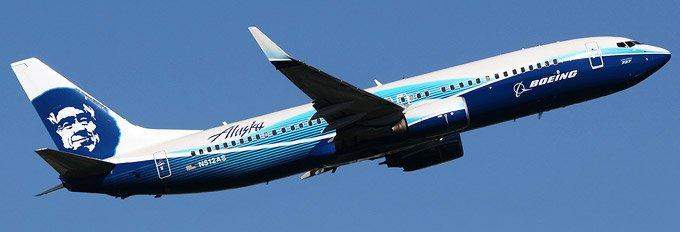
2011 brought a major change for the Alaska Air Group; starting at the beginning of the year, Horizon Air would no longer operate as a separate regional airline. Alaska Airlines is responsible for scheduling, marketing and pricing all flights. As part of the change to the new business model, the Horizon Air brand was retired and all Horizon planes were repainted with a co-branded "Alaska Horizon" livery.
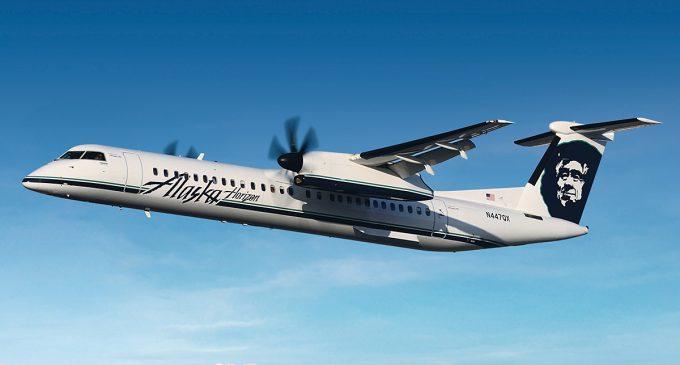
In January 2011, Alaska Airlines placed an order for thirteen 737-900ERs. The aircraft were delivered between 2012 and 2014. Alaska also ordered two 737-800s as part of this order. In November 2011 Alaska Airlines flew 75 commercial passenger flights in the U.S. powered by biofuel using a 20 percent blend of sustainable biofuel made from used cooking oil that meets rigorous international safety and sustainability standards.
On February 16, 2012, Alaska Airlines' CEO, Bill Ayer, retired. The airline's president Brad Tilden officially became the new CEO on May 15, 2012.
In October 2012, Alaska placed the largest order in its history when it ordered a total of 50 Boeing 737s. The order consists of 20 Boeing 737 MAX 8s, 17 Boeing 737 MAX 9s and 13 Boeing 737-900ERs.
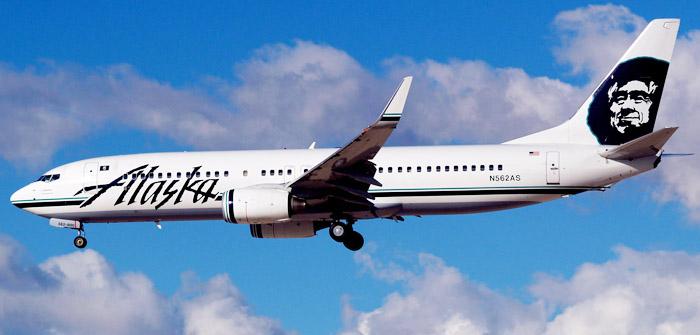
In 2015, Alaska Airlines announced 3 new nonstop destinations from Seattle, to Charleston, Nashville and Raleigh-Durham. These, along with a flight between Los Angeles and Baltimore, began in late 2015 using their 737 aircraft.
On January 25, 2016, for the first time in 25 years, Alaska Airlines unveiled a major update to its brand, which included a new logo and livery. In the new design, the Alaska wordmark was streamlined and the design of the Eskimo logo was simplified and the ruff's on the parka were made more colourful.
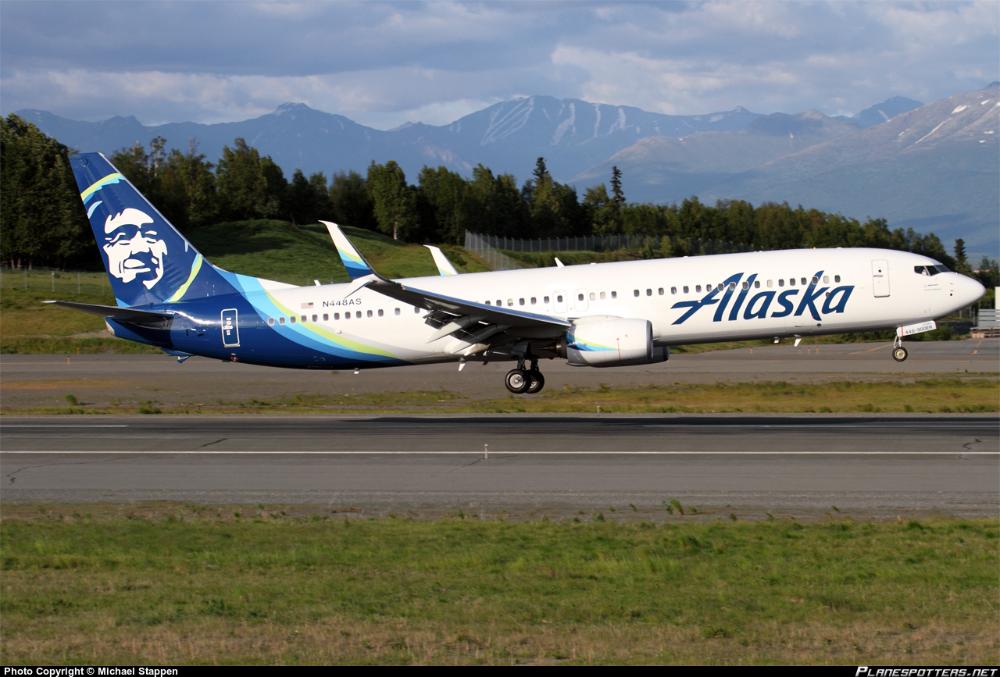
On April 4, 2016, Alaska Air Group announced it would acquire Virgin America, an airline based out of the San Francisco Bay Area. With Virgin America operating hubs in San Francisco and Los Angeles, the merger greatly expands the presence of Alaska Airlines in California and the West Coast. After the acquisition was announced, Richard Branson, the head of the Virgin Group and one of the founders of Virgin America described himself as "sad" and disappointed. The United States Department of Transportation issued a single operating certificate for a combined Alaska Airlines and Virgin America on January 11, 2018.
The acquisition did present one major issue for the Alaska Air Group: while Alaska operates an all-Boeing 737 fleet of aircraft, Virgin America operated an all-Airbus fleet. The first Airbus to leave the fleet will be from 2019 onwards as new Boeing aircraft arrive to replace them. The remaining Airbuses will disappear between 2021 and 2024, by when the whole fleet would be modernised and up to date.
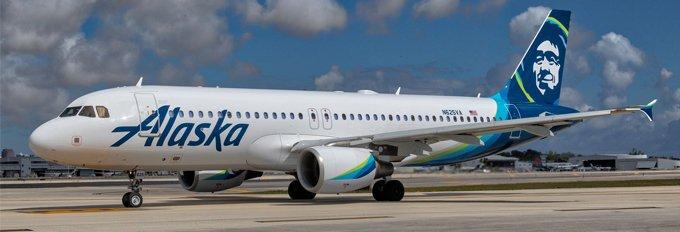
Whenever the history of commercial aviation is written, people ask how an obscure little airline in America's hinterland has continued to survive and thrive while once-proud giants disappeared. The answer is simple, Alaska Airlines, has focused on key routes for many decades, creating a good reputation and reliable service, adding to this a good hub at Seattle airport in which it dominates the market. It continues to grow and adds modern equipment planes to it's fleet, the majority with Boeing as a loyal supplier of products and taking delivery of new series B737 next generation max aircraft in the years to come to remain competitive and at the front of the market.
History source: Wikipedia.rg and Alaskaairlines.com
Operations and Destinations 🌍:
Its primary hubs are Seattle–Tacoma, Portland, Ted Stevens Anchorage, and Los Angeles International Airport. It operates now a days all over the country, but still has a major presence in it's home, Alaska and the west coast of the USA. It flies to a total of over 115 domestic and international destinations. Flying as well to Mexico, Canada and Costa Rica.
The following destinations* are served by Alaska at the time of publishing:
| Region 🗺️ | Destinations 🌍🌎🌏 |
|---|---|
| ✈ Domestic (USA) | Adak, Albuquerque, Anchorage, Atlanta, Austin, Baltimore, Barrow, Bellingham, Bethel, Boise, Boston, Bozeman, Burbank, Charleston, Chicago, Columbus, Cordova, Dallas, Deadhorse/Prudhoe Bay, Denver, Detroit, Dillingham, El Paso, Everett, Fairbanks, Fort Lauderdale, Gustavus, Honolulu, Houston, Indianapolis, Juneau, Kahului, Kansas City, Ketchikan, King Salmon, Kodiak, Kona, Kotzebue, Las Vegas, Lihue, Los Angeles, Milwaukee, Minneapolis, Nashville, New Orleans, New York City, Newark, Nome, Oakland, Oklahoma City, Omaha, Ontario, Orange County, Orlando, Palm Springs, Petersburg, Philadelphia, Phoenix, Pittsburgh, Portland, Raleigh, Reno, Sacramento, Salt Lake City, San Antonio, San Diego, San Francisco, San Jose, San Luis, Obispo, Santa Barbara, Seattle, Sitka, Spokane, St. Louis, Tampa, Tucson, Washington D.C, Wichita, Wrangell, Yakutat |
| ✈Canada | Calgary, Vancouver |
| ✈ Mexico and Costa Rica | Cancún, Guadalajara, Ixtapa, Loreto, Manzanillo, Mazatlán, Puerto Vallarta, San José del Cabo,Liberia, Jan Jose (Costa Rica) |
*Destination list is for reference only. Please check directly with the airline for updates.
*Note some destinations are only seasonal.*Correct info as of November 2018.
Fleet ✈️:
| Network 🌐 | Aircraft ✈️ |
|---|---|
| ✈Short Haul ( Regional thin routes) | Dash-Q400, Embraer E175 |
| ✈Short and Medium haul | Boeing 737-700/800/900/ER, (Boeing 737-Max9 on order) Airbus A319, A320, A321neo (A320neo on order). |
*Correct fleet info as of November 2018.
Alaska Airlines Photo Slide 📷:
Reviews ⭐:
 |  |
|---|---|
| ✅ Good quality service | 👎On all flights food is only for purchase. (drinks are for free). |
| ✅Competitive prices | 👎Not a member of a global airline alliance |
| ✅ Free seat selection and online check-in. | |
| ✅ Associate member with many airlines in which you can earn miles such as British Airways, KLM, American Airlines, Japan Airlines, LATAM, Aeromexico, Air France, Qantas, Delta, korean Air and Emirates amongst others. | |
| ✅ Good connection service at Seattle Airport. |




.png)